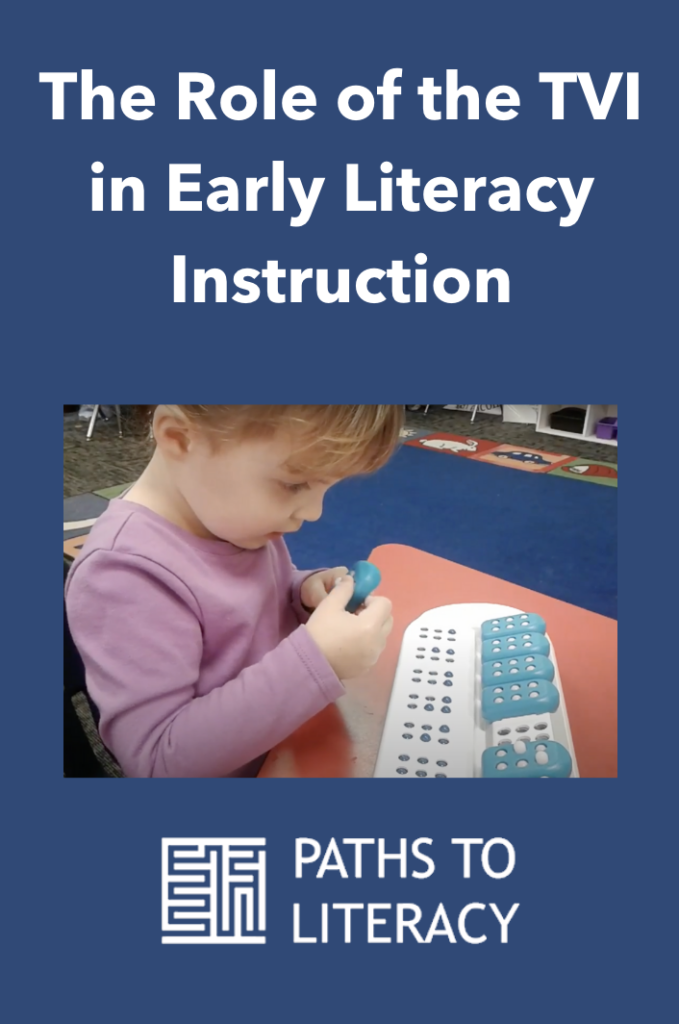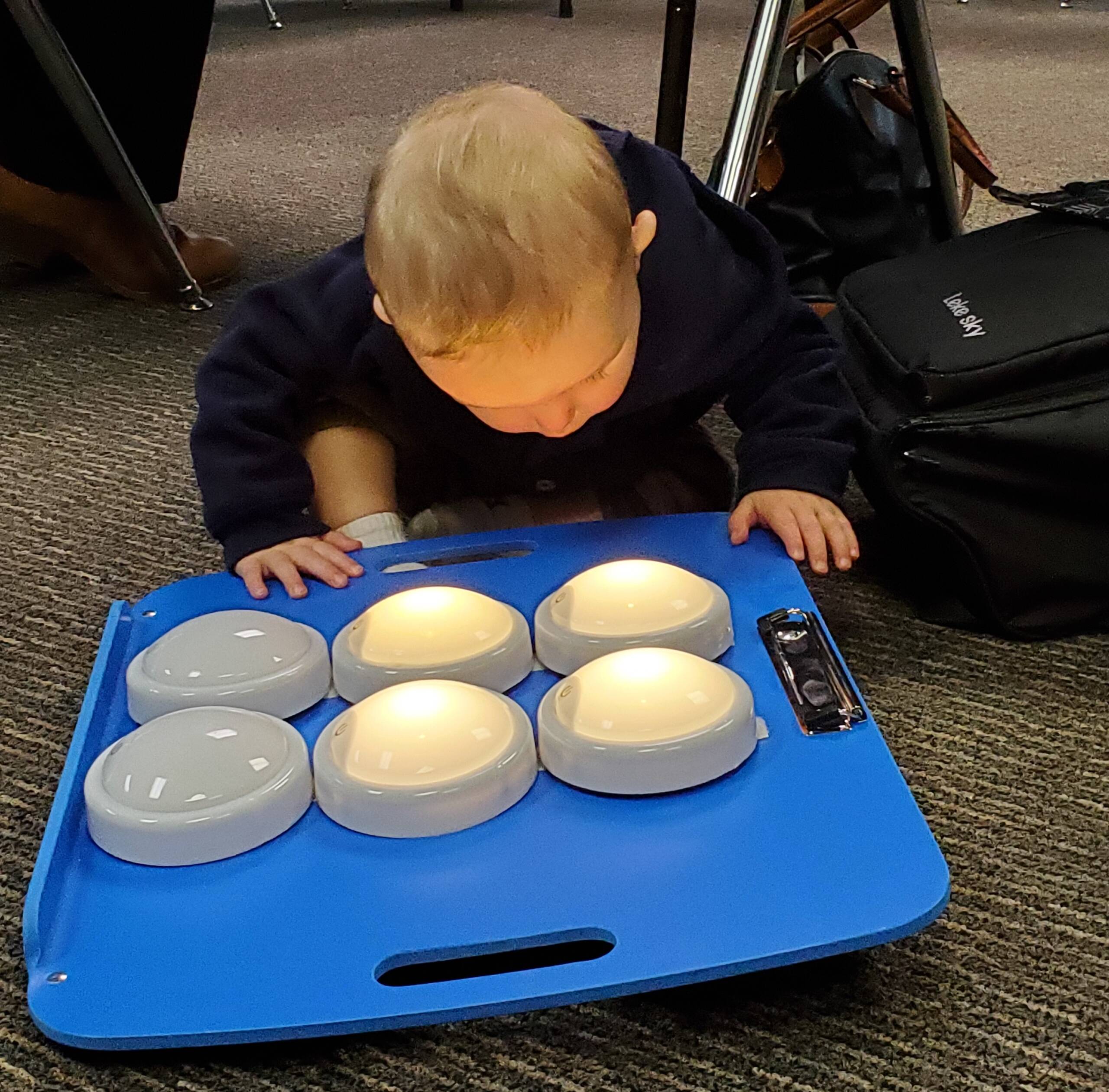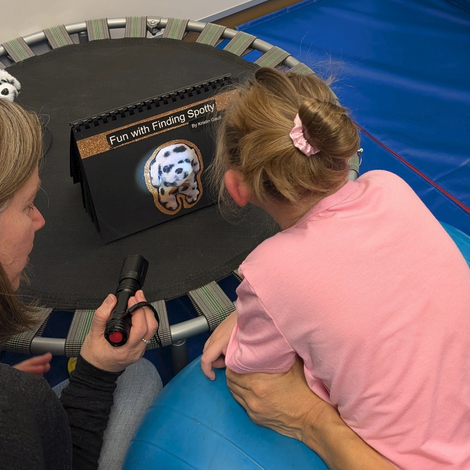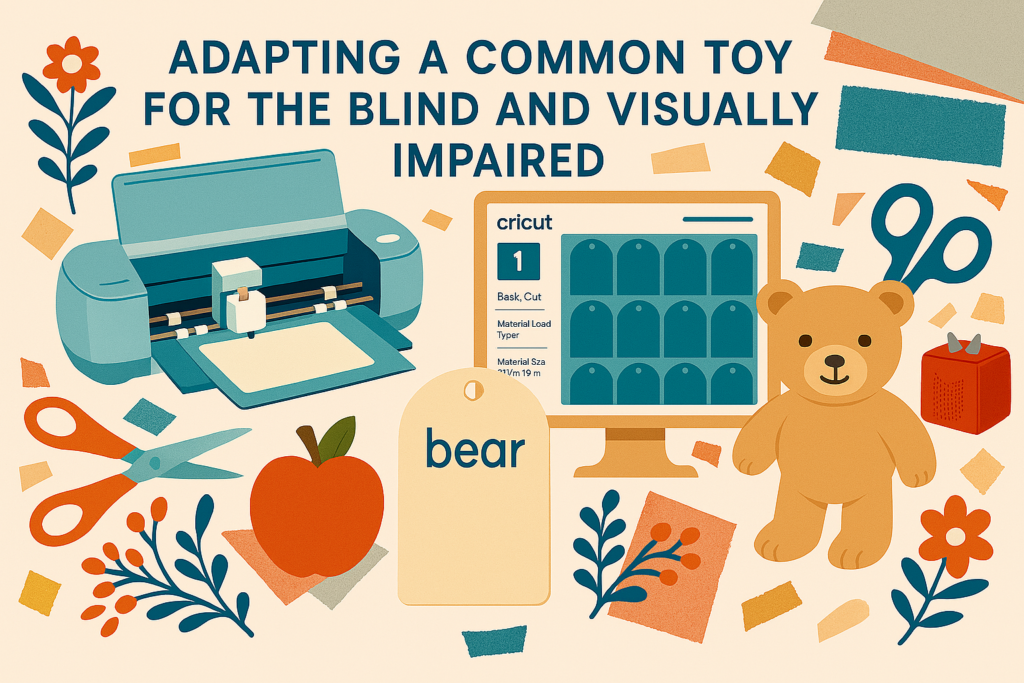By Charlotte Cushman, Cyral Miller and Debra Sewell
The teacher of students with visual impairments (TVI) plays an important role in helping families support their child’s unique learning needs. TVIs are uniquely qualified to share strategies that increase children’s access to their environment. We know that emergent literacy is a developmental process beginning at birth for all children, and students who have visual impairments (including tactile learners) also must begin their literacy instruction early. Visual impairment can include total blindness, low vision and CVI (cortical/cerebral, neurological, or brain-based visual impairment). Young children who lack reliable visual and auditory information need to have their world systematically brought within reach using tactile, auditory, gustatory and other sensory modalities. The TVI partners with educational team members and family to ensure consistent programming regarding motor/tactile skills, concept development and emergent language acquisition to help develop literacy skills.
Often, the need for a TVI is overlooked for children with multiple disabilities, as other needs may appear more critical. However, even in the presence of complex health issues, cerebral palsy, hearing differences, and/or significant cognitive delay, addressing visual impairment directly enhances a child’s access to optimal learning and development.
What does the TVI specifically do to support early literacy development? Five roles are defined below. These TVI roles apply when working with all students with visual impairment, whether or not they are deafblind or have additional support needs.
The TVI roles are:
- Evaluation
- Individual Family Service Plan (IFSP)/Individual Educational Plan (IEP) Development
- Direct Instruction
- Collaborative Consultation with Team Members
- Coaching with Family Members
Role 1: Evaluation
TVIs are responsible for critical evaluations of all students with visual impairments related to early literacy. These include:
- Functional Vision Evaluation (FVE)
- Learning Media Assessment (LMA), and
- Expanded Core Curriculum (ECC) Evaluations.
The FVE and LMA should be conducted and results shared prior to additional evaluation by other members of the educational team. This ensures that overall results accurately reflect the child’s skills (Evaluation Procedures, 2017). The TVI evaluations provide data to the educational team about the student‘s etiology/eye condition, use of functional vision, appropriate communication modes (for students who are deafblind or have complex access needs), learning media (including use of sensory channels, functional hearing evaluation, tactile skills), literacy media, and current levels in selected areas of the ECC. Evaluations for appropriate reading and writing media for all children with visual impairments (the LMA) need to occur as early as possible, regardless of the severity or multiplicity of diagnoses. A student‘s functional use of vision and hearing must first be determined before communication assessment can occur. Evaluation of early tactile skills specifically impacted by vision loss, conducted by the vision professional, is critical in emergent literacy instruction. All of this data provides essential information for team members to consider when designing and planning early literacy programs for students with visual impairment, including those who are deafblind. The TVI shares with other professionals the responsibility for evaluating knowledge of basic concepts, motor skills, and other areas impacted by visual impairment.
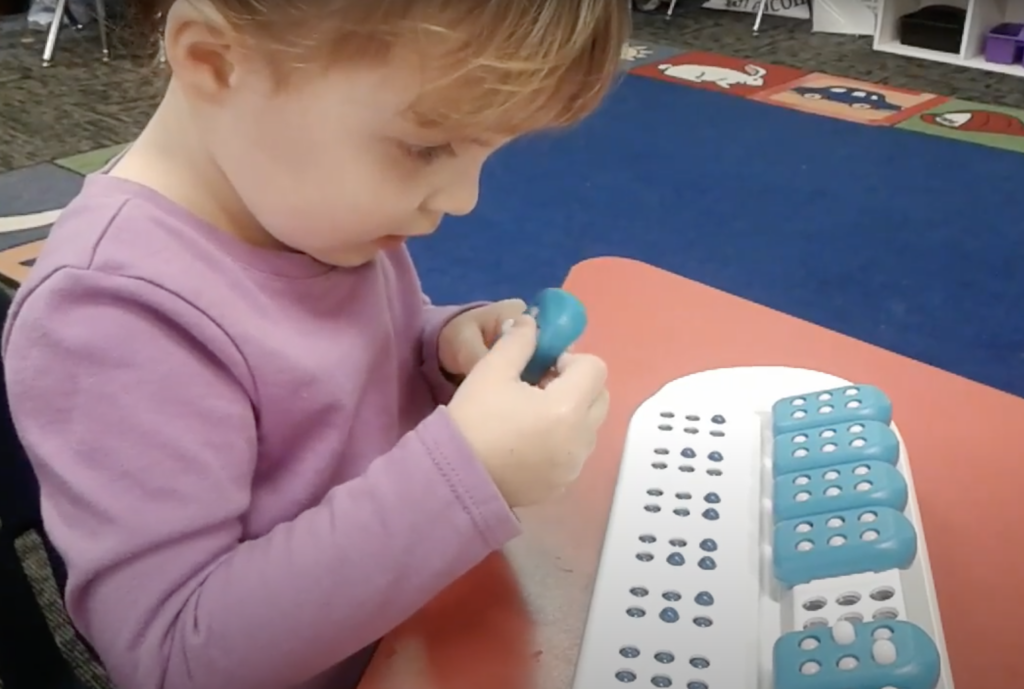
Role 2: IFSP/IEP Development
Based on the above evaluation findings and recommendations, TVIs provide team members critical input during the IFSP and IEP development process. TVIs write goals and objectives for students regarding instruction in basic concept development, literacy media (including development of sensorimotor, visual, gross and fine motor, and tactile discrimination skills), as well as other areas of the ECC. This is done in collaboration with the family and other team members, including the orientation and mobility (O&M) specialist, and if appropriate, Teacher of the Deaf and Hard of Hearing (TDHH) and Teacher of the Deafblind (TDB). TVIs also provide information to other team members during the program development process about accommodations and modifications for the home, classroom and for statewide assessments in later grades.
Listing all accommodations, such as adaptations to teaching methods, materials adaptations, specialized teaching materials, specific instructional supports, environmental accommodations, and assistive technology is essential for performance and success in literacy. When visual impairment impacts receptive and expressive communication, the TVI is needed to collaborate with the speech language pathologist and other team members to suggest appropriate accessible strategies when using sign language, communication boards, and other augmentative communication techniques. Teaching strategies, environmental accommodations, and organization of the literacy environment are crucial for students functioning at the emergent literacy stage of development (McKenzie & Davidson, 2007). When developing IFSPs and IEPs for tactile learners, collaboration with families, early childhood interventionists, and reading specialists/classroom teachers is essential to address specific learning differences due to the visual impairment.
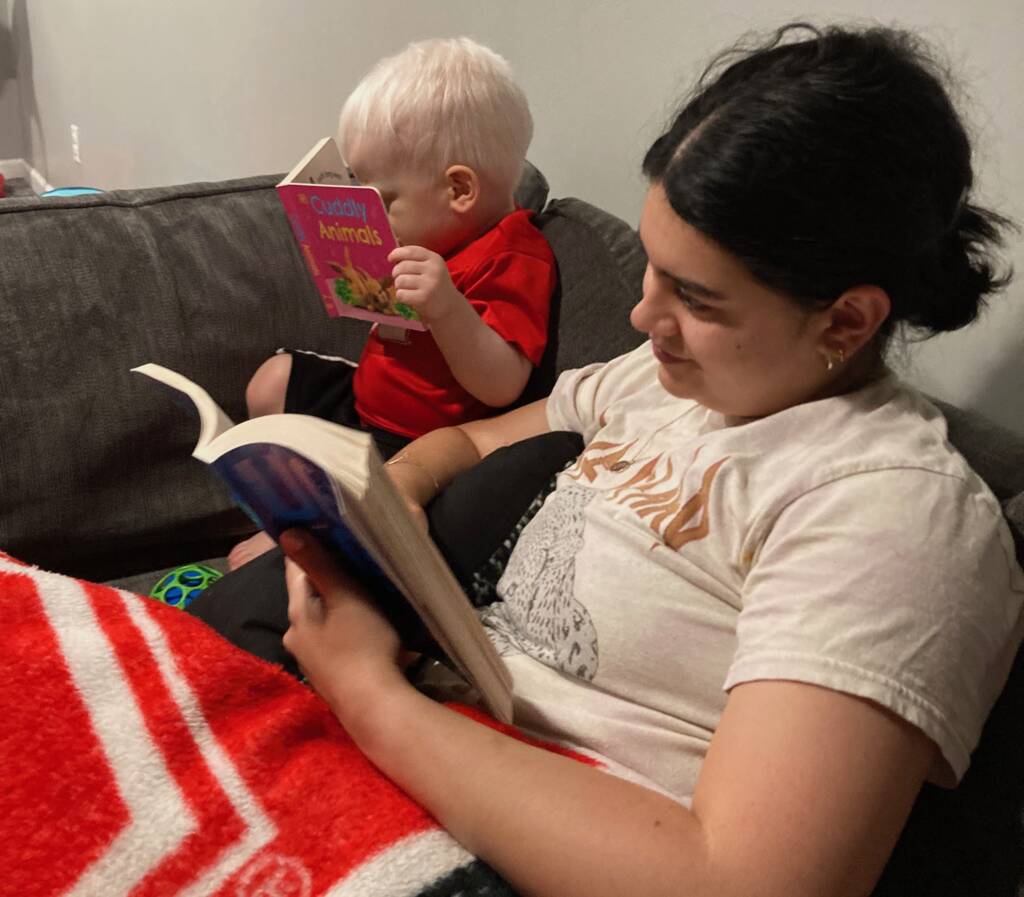
Role 3: Direct Instruction
Infants with visual impairment can miss out on developmental milestones due to their lack of incidental learning, as it is estimated that up to 90% of learning is acquired visually (The IRIS Center). Families need information on how to adapt their family routines and home environment to make experiences meaningful to their infants and toddlers with visual impairment. Instruction needs to be systematic and sequential, based on evaluation. Young children with visual impairment will often require direct instruction in early and emerging literacy areas such as:
- expanding concept development,
- developing early tactile and auditory skills,
- introduction to braille,
- use of functional vision,
- use of optical devices, and
- assistive technology.
Specialized instruction from a TVI with knowledge of non-visual instructional strategies is an important component of an early tactile reading program. Only a certified TVI is qualified to provide direct instruction in braille. “…the TVI provides direct instruction in tactual skills in a variety of environments and functional applications, assisting children with visual impairments from infancy to use their fingers and hands to explore, identify, discriminate, and interpret all tangible materials in the environment” (Spungin et al., 2017). TVIs collaborate with occupational therapists to address these skills.
The TVI is typically not the primary reading teacher in school settings. However, the TVI must work closely with the classroom teacher and reading specialist to ensure that young students with visual impairments have the foundational skills (motor skills, concept development, communication and tactile skills) necessary to become fluent braille readers. As a student is taught new tactile literacy skills by the TVI, the educational team follows through with frequent practice on emerging skills.
Role 4: Collaborative Consultation with Team Members
TVIs are important members of the educational team, sharing information unique to the impact of visual impairment and dual sensory impairment on early literacy. While each team member brings information regarding their area of expertise, sensory impairment impacts all areas of development. The TVI and O&M specialist collaborate to share knowledge about how to address early motor development that may be affected by visual impairment (for example, body image, spatial concepts, visual motor coordination, abnormal reflex patterns, balance, posture, trunk and wrist rotation).
TVIs need to work closely with other team members:
- TVIs conduct the FVE and LMA before all other assessments in order to share the impact of each student’s visual impairment on learning. (Evaluation Procedures, 2017)
- TVIs observe regularly to monitor whether home and classroom routines implemented by others are successfully addressing the impact of visual impairment.
- TVIs schedule collaborative consultation times with the educational team members to coordinate instructional strategies and support an educational program that consistently addresses sensory needs. Team members include early interventionists, physical education teachers, O&M specialists, TDHH, TDB, and speech/language, occupational and physical therapists. (Spungin et al., 2017)
Role 5: Coaching with family members of infants and toddlers
Within early childhood intervention, coaching is a preferred model for supporting families to cultivate the skills and confidence to parent their young children. Family-centered approaches provide guidance and support to parents so they can become more effective and successful in helping provide appropriate early developmental experiences in the home.
In this approach, the TVI first carefully elicits the family’s perspective on their child and goals (in literacy and other developmental areas) that are important to them. Then, following observation of typical family interactions, the TVI plans with the family about ways to integrate appropriate strategies and skill building. These strategies are designed to fit within the family framework in a way that is aligned with family routines and culture. Coaching enables family members to take the lead on implementing effective learning strategies, and then reflect upon their child’s progress with others during home visits. This process is designed to develop more confidence in the family’s ability to successfully meet their child’s needs.
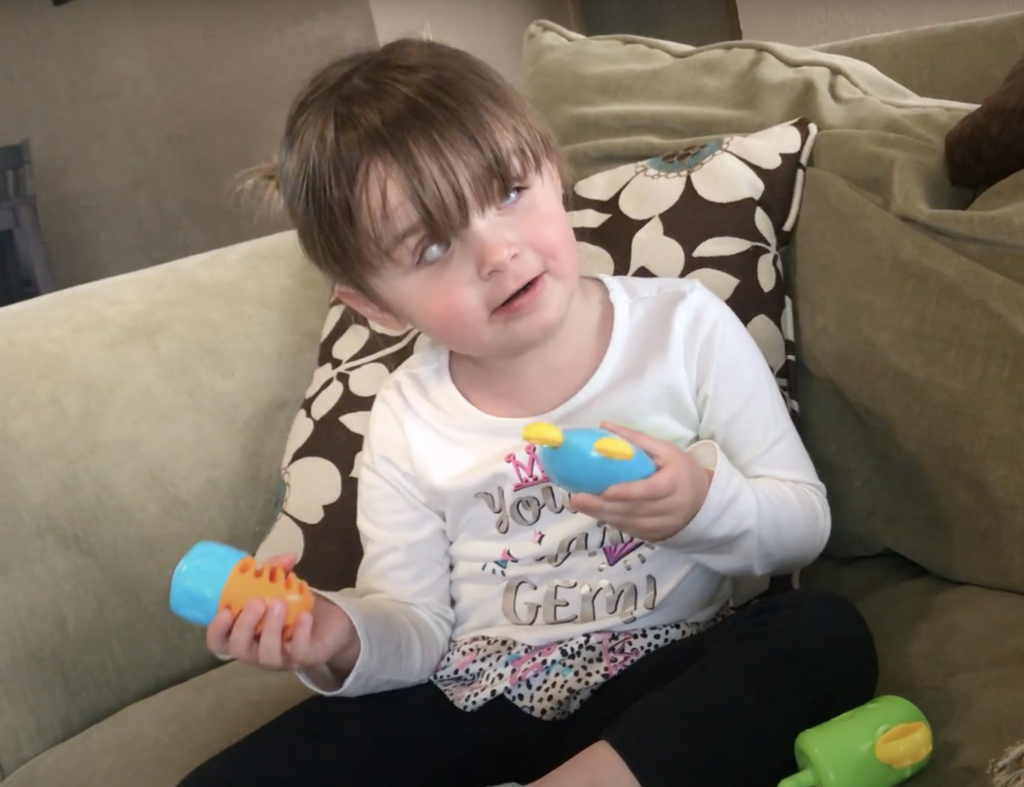
TVIs: Critical Members of the Team
Working closely with families is the starting point for all early intervention services. Each member of the educational team offers different perspectives and expertise. Although many professionals are involved in literacy programming for young children, the TVI has an important role to play in sharing information and collaborating with others on areas impacted by the visual loss as well as providing appropriate direct instruction based on the child’s needs. While some developmental areas have shared focus with other professionals, it is important to remember that the TVI has unique knowledge to contribute to the child’s overall success in developing literacy. TVIs must be strong advocates for young children and their families to ensure that their individual needs are addressed.
Adapted from The Role of the TVI in Literacy for Student who are Deafblind, Amy R. McKenzie, Ed.D.Florida State University, College of Education, Published in DVI Quarterly, Vol 54, #3, Spring 2009
References
IDEA Evaluation procedures, 34 C.F.R §300.304(c)(3) (2017). https://sites.ed.gov/idea/regs/b/d/300.304
The IRIS Center. (2022). Instructional accommodations: Making the learning environment accessible to students with visual disabilities. Retrieved June 19, 2023 from https://iris.peabody.vanderbilt.edu/module/v02-successsight/.
The IRIS Center. (n.d). What does Ms. Milton need to know about students with visual impairments? Page 3: How Visual Impairments Impact Learning. Retrieved June 19, 2023 from https://iris.peabody.vanderbilt.edu/module/v02-successsight/cresource/q1/p03/#content
McKenzie, A.R., & Davidson, R.C. (2007). Emergent literacy environments of students who are deafblind: A case study. Journal of Visual Impairment and Blindness, 101(11), 720-725.
McKenzie, A.R. (2009). The role of the TVI in literacy for students who are deafblind. DVI Quarterly, Council for Exceptional Children, 54(3), 20-22.
Prickett, J.G. & Welch, T.R. (1995). Deaf-blindness: Implications for learning. In K.M. Huebner, J.G. Prickett, T.R. Welch, & E. Joeffe (Eds.), Hand in hand: Essentials of communication and orientation and mobility for your students who are deafblind. (pp. 25-60). AFB Press.
Spungin, S.J., Ferrell, K. A., & Monson, M. (2017). The role and function of the teacher of students with visual impairments. Position paper of the Division on Visual Impairments and Deafblindness, Council for Exceptional Children.
January, 2024
